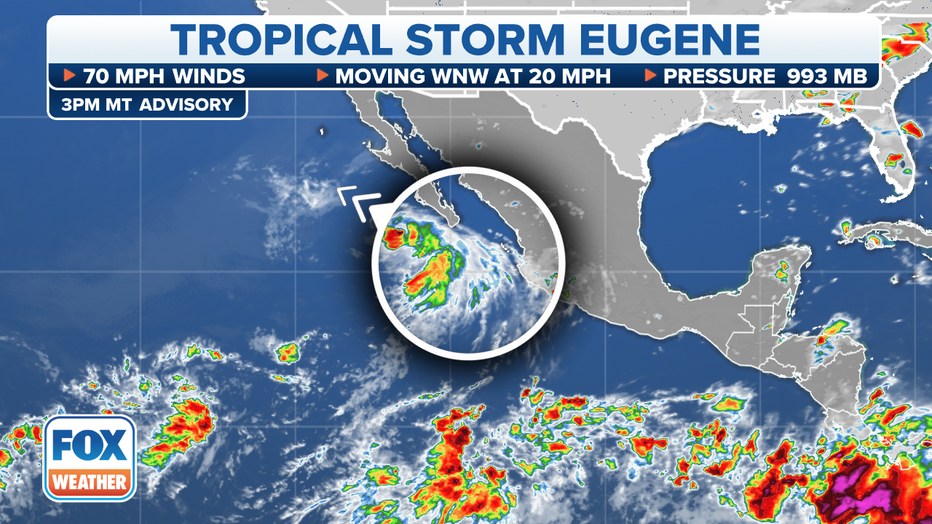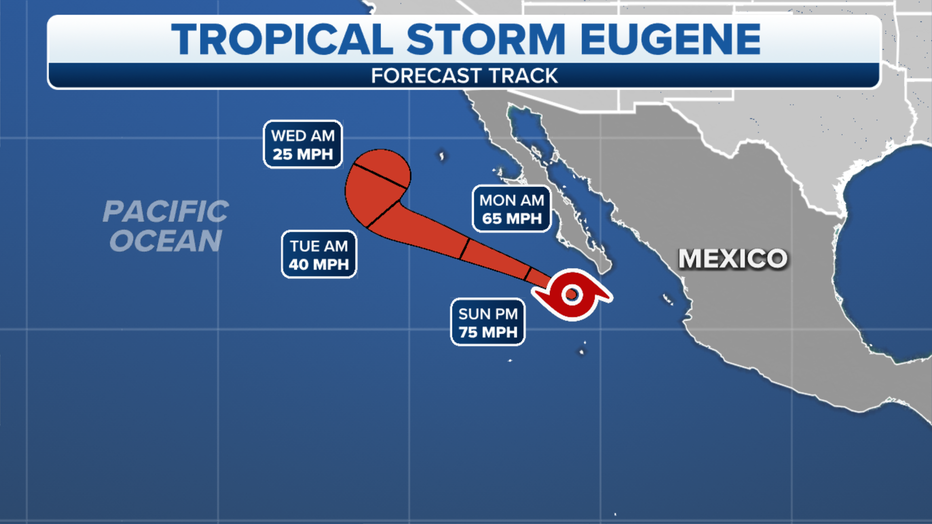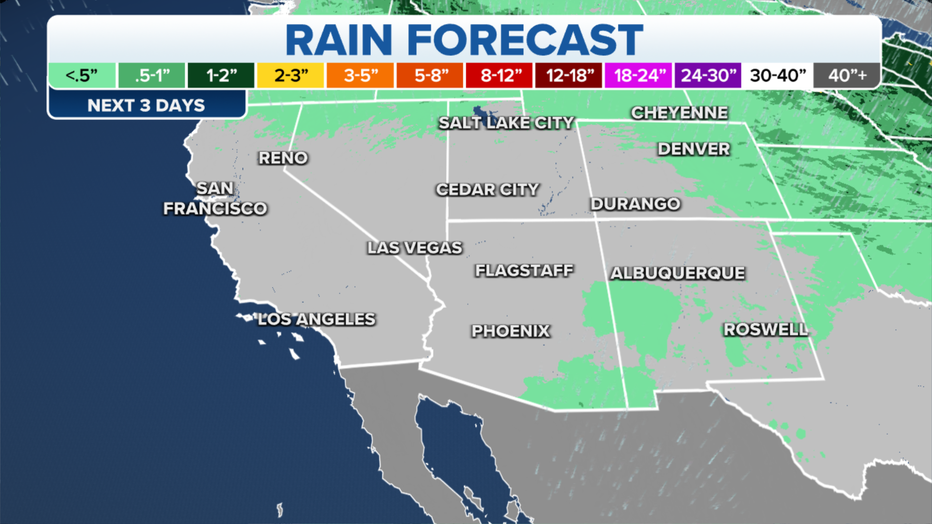Hurricane Warnings in place as Eugene moves just off Baja California coast
Tropical Depression Six-E in the Eastern Pacific strengthened into Tropical Storm Eugene on Saturday, and the National Hurricane Center (NHC) says the storm could strengthen into a hurricane.
According to the NHC, Eugene is expected to continue to strengthen and could become a hurricane during the day on Sunday before weakening by Monday. Some forecast models show the storm taking a right turn this week, which would put what’s left of the system heading for the Baja California Peninsula or possibly far Southern California.
Here’s the latest information about Tropical Storm Eugene.
Where is Tropical Storm Eugene?
The NHC reported that Tropical Storm Eugene is located 140 miles south of the southern tip of the Baja California Peninsula and is moving west-northwest at 20 mph. It has maximum sustained winds of 70 mph.

The current statistics of Tropical Storm Eugene. (FOX Weather)
Where is Tropical Storm Eugene headed?
The forecast calls for Eugene to strengthen and could become a hurricane on Sunday before it starts to weaken and becomes a tropical storm by Sunday night or Monday morning. Eugene should then weaken to a tropical depression by Tuesday evening. The official forecast shows the system taking a slight northeast turn by Wednesday evening.

The forecast cone for Tropical Storm Eugene. (FOX Weather)
Spaghetti plots, which show how various weather computer models forecast the track of the system, show what’s left of Tropical Storm Eugene to move toward the northern California Baja Peninsula or perhaps even far Southern California.

The spaghetti plot for Tropical Storm Eugene. (FOX Weather)
What are the impacts of Tropical Storm Eugene?
High seas are the primary concern for now with Eugene. Hurricane Warnings were issued for off the coast of Baja California because of wave heights reaching up o 18 feet in the Eastern Pacific.
Rain, wind and rough seas are expected along Mexico’s Pacific coast. Dangerous rip currents will be very likely in that area.
It’s too early to provide specifics on the impacts of the storm if a turn toward the northeast were to happen late next week. However, most forecasters in the region aren’t expecting much from it.
Not Kay, forecasters say
While it is possible part of the system’s moisture plume makes it into the Desert Southwest, National Weather Service meteorologists are not anticipating any significant impacts from the cyclone.
Cities from Nevada through Southern California and into Arizona and New Mexico are in desperate need of precipitation following a delayed start to the monsoon season.
According to the NWS office in Tempe, Arizona, Phoenix is in the midst of one of the most prolonged periods on record without rainfall, and there is no precipitation in sight.

Expected rainfall over the next 3 days. (FOX Weather)
The city’s official observation site at Phoenix Sky Harbor International Airport has reached 134 days without precipitation, and the NWS believes they are on track to reach the second-longest dry spell on record at 143 days.
"The ridge of high pressure is not situated in an optimal position to receive deep tropical moisture from a disturbance over the eastern Pacific," NWS meteorologists said. "If there is a shower or two, it will be because of the orographic lift over the Mogollon Rim and White Mountains. Valleys across South and Central Arizona won’t see a drop."
Southern California is in much the same boat, and meteorologists warn if there are any impacts, it could be from increased swells.
The situation is the opposite of when Tropical Storm Kay produced showers and gusty winds across the Southwest in 2022.
During the rare event, southwesterly winds and warm water temperatures helped to funnel tropical moisture over parts of the U.S. – a situation that appears not to be in the cards this go-around.
NWS meteorologists are optimistic that an active El Niño pattern will lead to more chances of tropical moisture in the Southwest during the fall.

